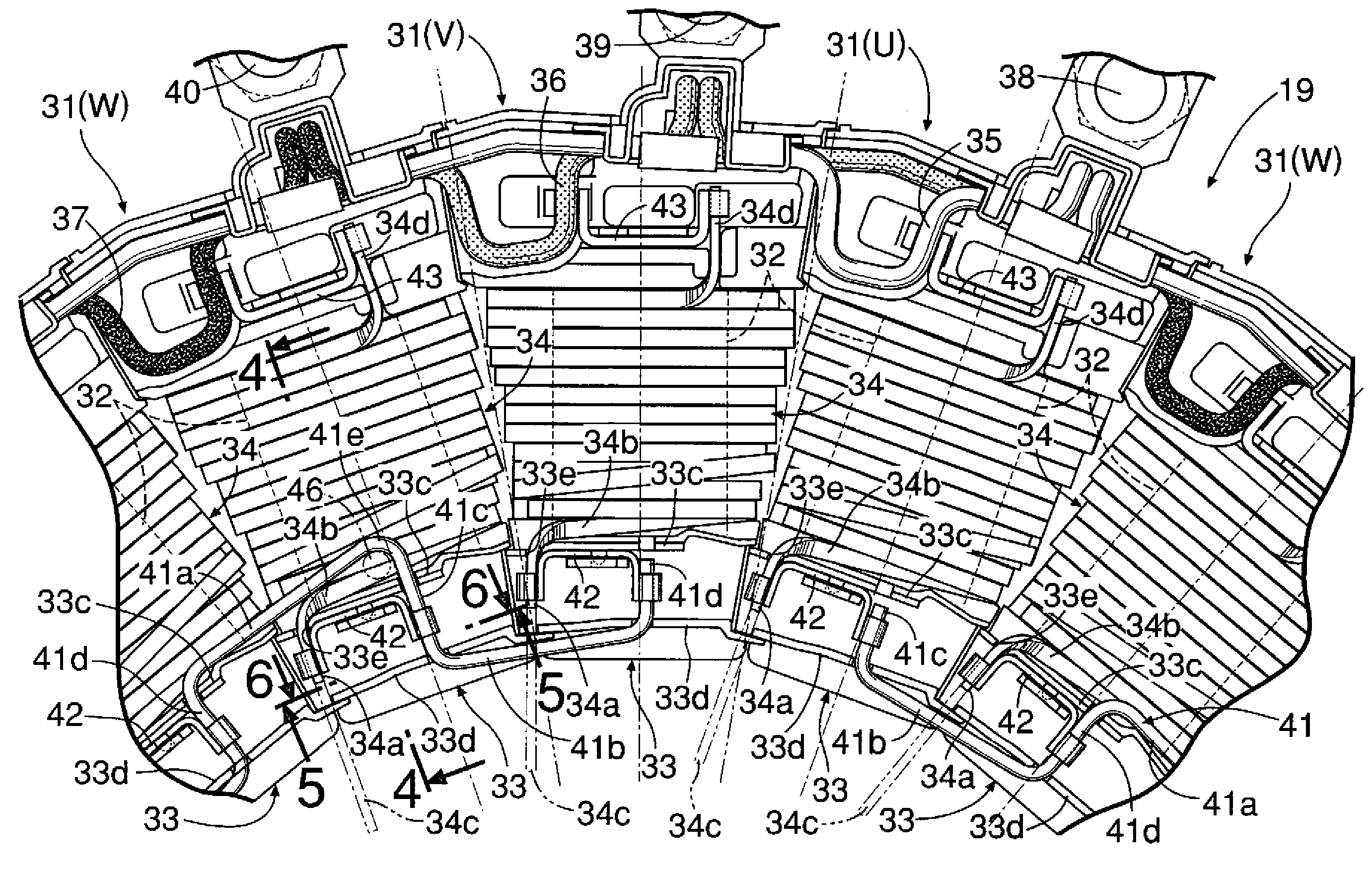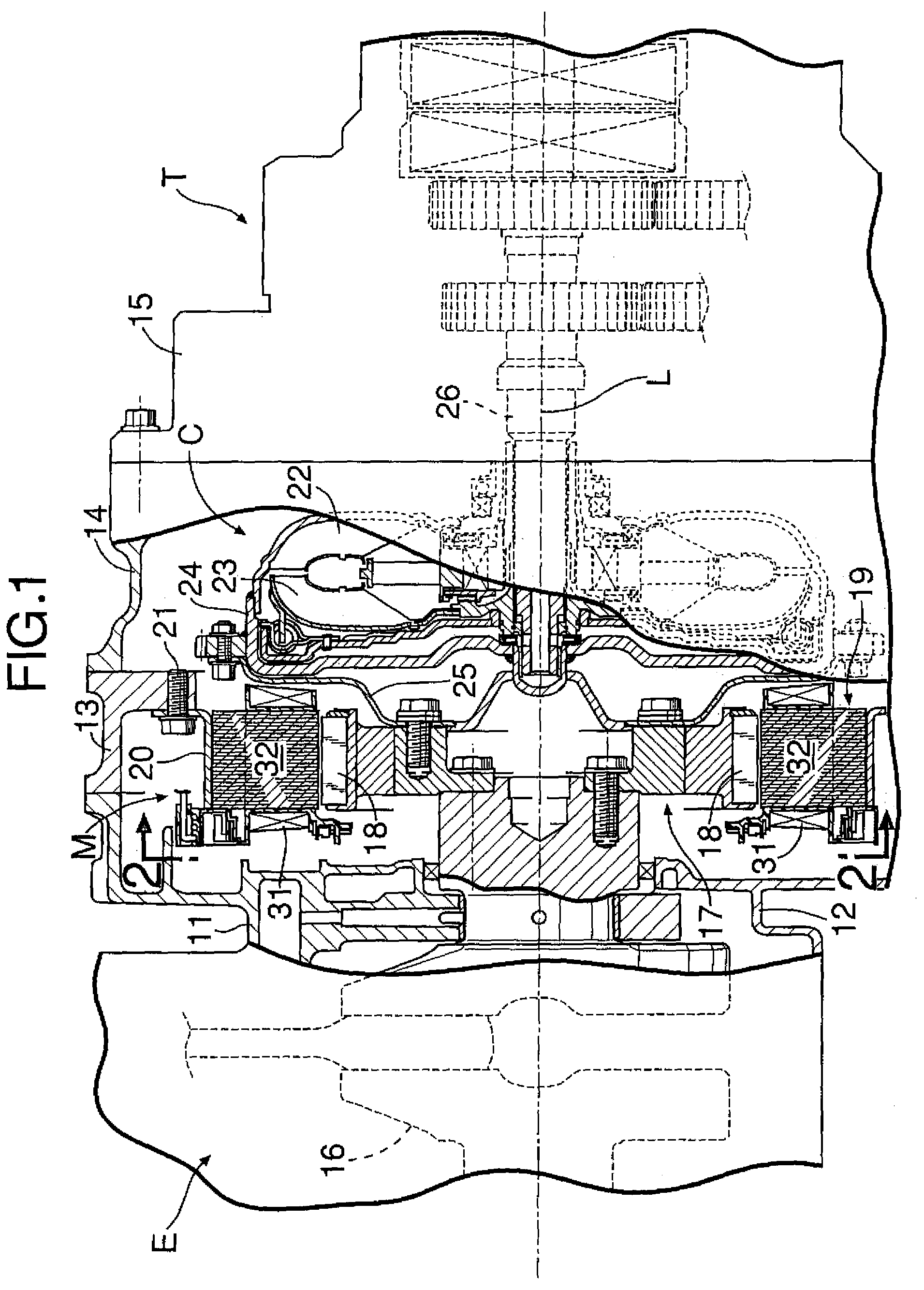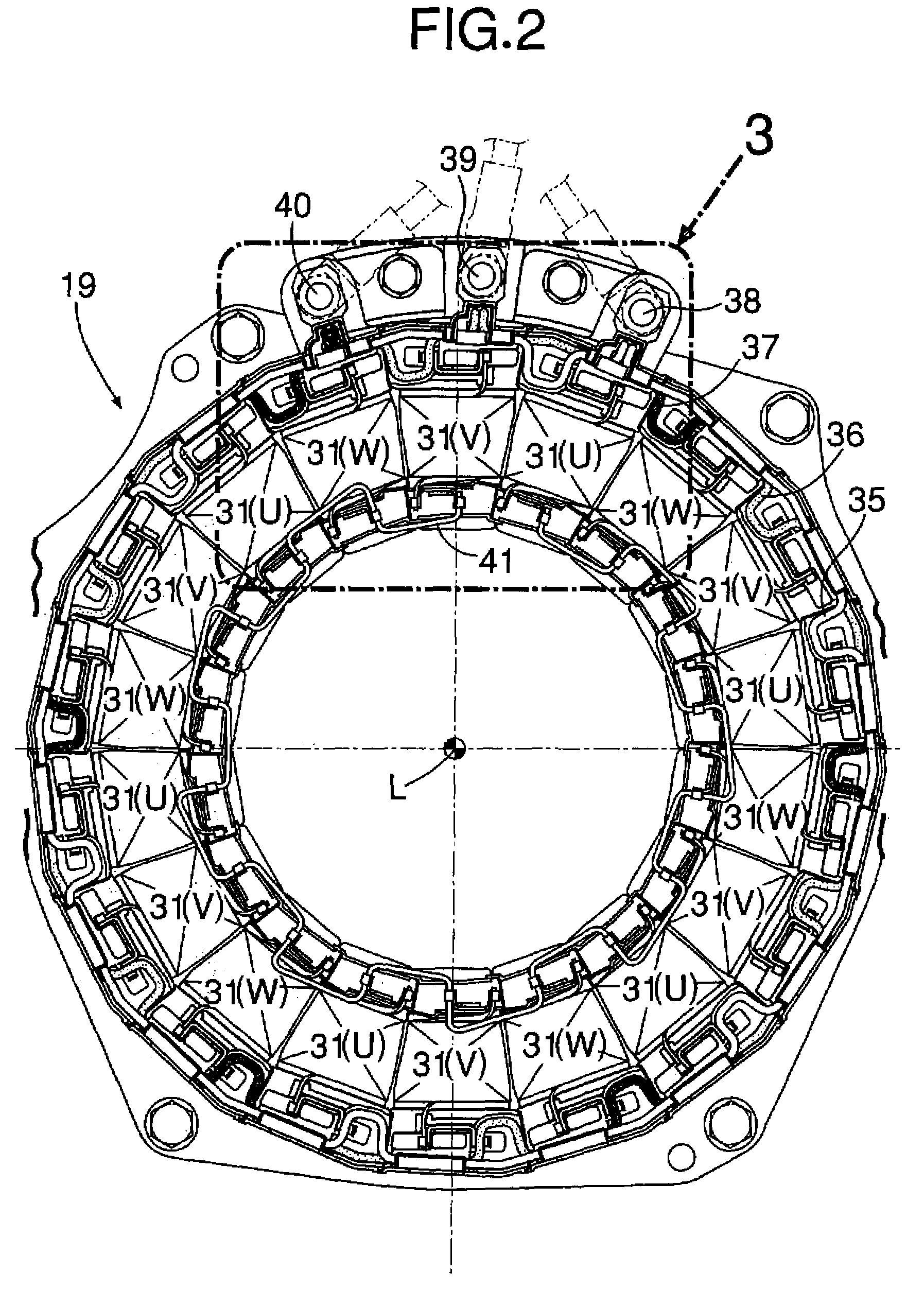Motor stator structure
a technology of stator structure and motor, which is applied in the direction of engine-driven generators, transportation and packaging, electric devices, etc., can solve the problems of increasing processing cost, mechanizing completely, and difficulty in bending rectangular cross-sectioned wires in directions oblique to their surfaces, so as to prevent the leakage of synthetic resin
- Summary
- Abstract
- Description
- Claims
- Application Information
AI Technical Summary
Benefits of technology
Problems solved by technology
Method used
Image
Examples
Embodiment Construction
[0034]As shown in FIG. 1, a hybrid vehicle power unit includes a DC brushless motor M arranged between an engine E and a transmission T. A motor case 13, a torque converter case 14 and a transmission case 15 are coupled to right sides of a cylinder block 11 and a crankcase 12 of the engine E. A rotor 17 of the motor M is fixed to an end of a crankshaft 16 supported between the cylinder block 11 and the crankcase 12. An inner periphery of an annular stator 19 is opposed to a plurality of permanent magnets 18 fixed to an outer periphery of the rotor 17, with a predetermined air gap provided therebetween. An annular mounting bracket 20 fitted over an outer periphery of the stator 19 is fixed to the motor case 13 by a plurality of bolts 21.
[0035]A torque converter C is housed in the torque converter case 14. The torque converter C includes a turbine runner 22 and a pump impeller 23. A side cover 24 is coupled to the turbine runner 22 to cover the pump impeller 23, and connected to the r...
PUM
 Login to View More
Login to View More Abstract
Description
Claims
Application Information
 Login to View More
Login to View More - R&D
- Intellectual Property
- Life Sciences
- Materials
- Tech Scout
- Unparalleled Data Quality
- Higher Quality Content
- 60% Fewer Hallucinations
Browse by: Latest US Patents, China's latest patents, Technical Efficacy Thesaurus, Application Domain, Technology Topic, Popular Technical Reports.
© 2025 PatSnap. All rights reserved.Legal|Privacy policy|Modern Slavery Act Transparency Statement|Sitemap|About US| Contact US: help@patsnap.com



